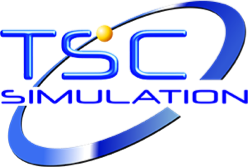September 12th 2024
Introducing Our New Multistage Flash (MSF) Desalination Simulation Model:
A Key Component in Renewable Energy Solutions
As the world transitions towards sustainable energy and environmental responsibility, innovative technologies play a pivotal role. At TSC Simulation, we’re excited to introduce our latest simulation in water desalination technology: the Multistage Flash (MSF) Desalination Simulation Model. This advanced tool represents a significant step forward in our commitment to supporting the energy transition through renewable and efficient solutions.
The Need for Advanced Desalination Technologies
Water scarcity is a global challenge, and desalination offers a solution by converting seawater into drinkable water. Traditional desalination methods, while effective, can be energy intensive. MSF desalination offers an efficient and scalable way to address this challenge, especially in regions that need it most.
What is MSF Desalination?
MSF desalination is a thermal process that uses multiple stages to evaporate and condense seawater, extracting fresh water. Each stage of the MSF process operates at progressively lower pressures, allowing the seawater to flash into steam as it passes through. This technique maximises water production while minimising energy consumption, making it a highly efficient option in comparison to other desalination processes.
The Power of Simulation in Energy Transition
Our new SIM 4880 Multistage Flash Desalination simulation model is designed to provide in-depth knowledge of the desalination process. This model allows users to simulate various operational conditions and strategies, understand the performance of MSF systems, and optimise energy use. By using dynamic simulation, engineers, students, and decision-makers can explore the process of MSF desalination without the need for costly physical setups.
Key Features
The Sim 4880 MSF Desalination Model offers a unique opportunity for users to:
- Understand complex desalination processes: With a detailed representation of multistage flashing, users can explore how temperature, pressure, and energy consumption affect freshwater yield.
- Carry out startup and shutdown of the process: Understand how to respond to process upsets, alarms, and interact with an Emergency Shutdown
- Understand energy optimisation strategies: The model allows users to simulate how energy-efficient designs and varying process conditions can change desalination performance and efficiency.
- Prepare for future challenges: As the global demand for freshwater grows and the energy landscape shifts, our simulation model equips users with the knowledge and tools to be at the forefront of desalination innovations.
An Integral Part of Our Renewable Energy Transition Range
This MSF simulation is not just an isolated solution. It is part of our broader effort to align with renewable energy strategies. Our focus is on creating simulations that not only solve immediate challenges but also contribute to a cleaner, more sustainable future.
Whether you’re in the classroom, conducting research, or working in the field of sustainable development, this new simulation model is a powerful tool to help you navigate the future of water and energy.
For more information, visit Sim 4880 MSF Desalination Model.
#MSF #Sustainability #RenewableEnergy #UnitOperations #Simulation #Desalination #EducationalTools #energytransition #processsimulation #training #multistageflash


